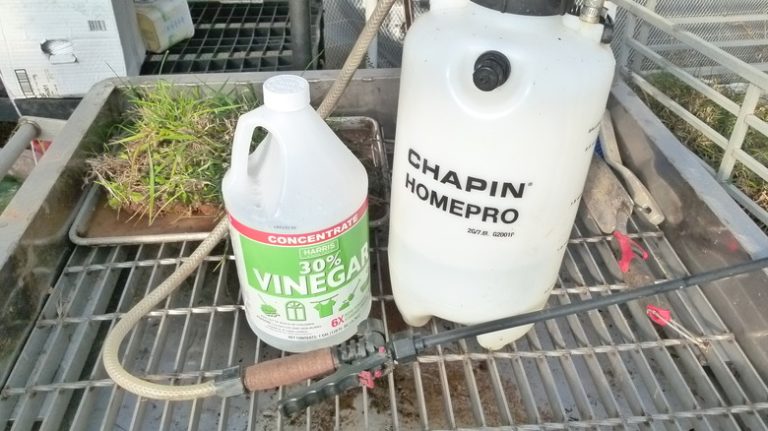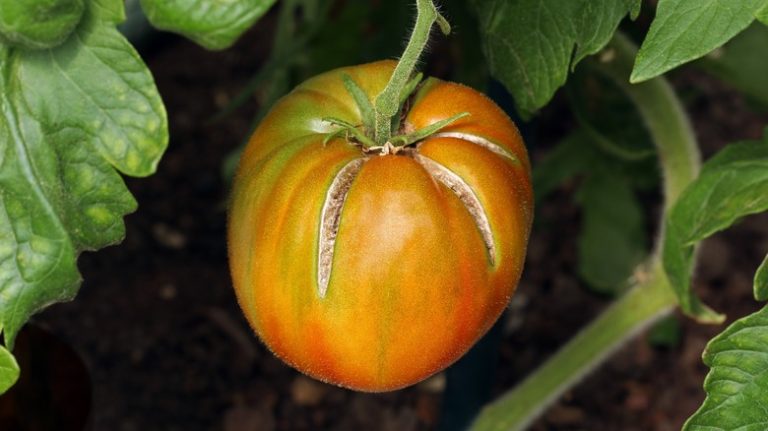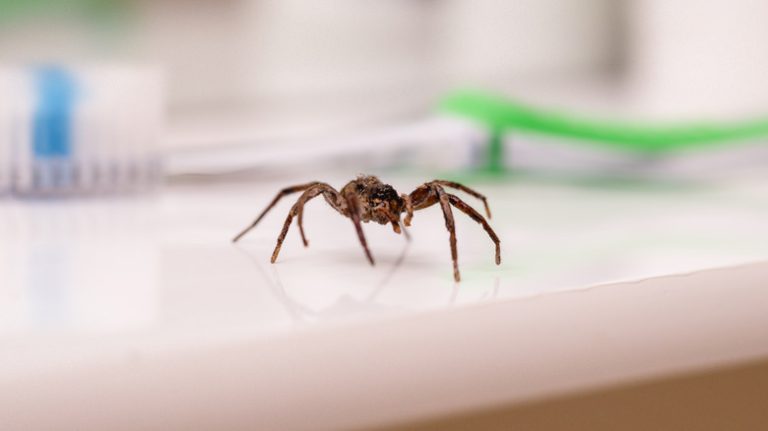It can be unsettling to see a strange, reddish liquid oozing out of your tree. This can give the appearance that it is bleeding and may stain the bark. You might immediately assume the worst — that your tree is dying. However, while it may be sick, there are also some more innocuous possibilities for the staining. “Bleeding” on trees can be caused by a variety of reasons including mistakes in pruning, injuries, pests, and diseases. If you notice that your tree is leaking, you can help avoid this problem in the future by pruning it at the right time, preventing animal damage, and treating any infestations or diseases as soon as possible.
Of course, the liquid you see oozing from the tree is not blood, as plants don’t contain blood. Instead, this liquid is mostly made up of sap or resin. Sap behaves somewhat similarly to blood, as it helps the tree transport nutrients and water throughout itself. This sap comes from an inner layer of the tree called the sapwood or xylem. Resin is a slightly different substance that is produced in many conifers to seal injuries or cuts and can harden to amber. While a bleeding tree isn’t necessarily good because it means that the plant has been harmed in some way and could lead to further problems, the sap or resin should also be left alone. Instead, you need to get to the root of the problem to prevent bleeding in the future.
Prune trees at the right time and prevent animal damage
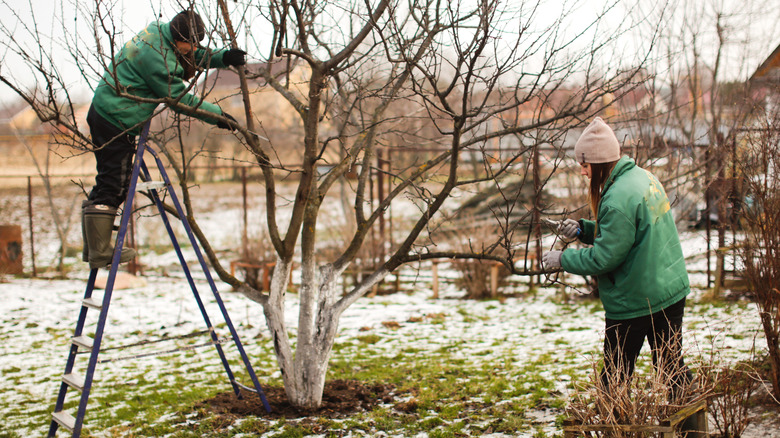
It’s generally best to prune your trees in late winter just before they break out of dormancy, but there are some important exceptions to this rule. Maples often bleed heavily in late winter, so they should instead be pruned in late spring or early summer after they have leafed out. The same is true for walnut, birch, and beech. Oaks, on the other hand, should never be pruned during summer, as it can cause them to bleed, which can attract insects and therefore expose them to oak wilt disease. Conifers rarely need to be pruned, but if required, it’s generally best to do so during late winter or early spring. Don’t try to prevent resin “bleeding” on conifers or other trees that produce resin, as it will harden and help protect the tree from infections and infestations. Additionally, always wash and disinfect your pruners between trees so you don’t inadvertently spread diseases between them.
It’s not only injuries from pruning that can cause bleeding. Animals chewing on or boring into the trees can also cause bleeding, depending on whether sap is flowing in the tree at the time. Even worse, if rabbits or other animals chew off the bark all the way around the trunk, the tree is unlikely to survive. Consider wrapping the trunks of more vulnerable trees in burlap or chicken wire to keep your trees safe from animal damage, which will then prevent them from bleeding.
Prevent and treat infestations and diseases that are causing your tree to bleed
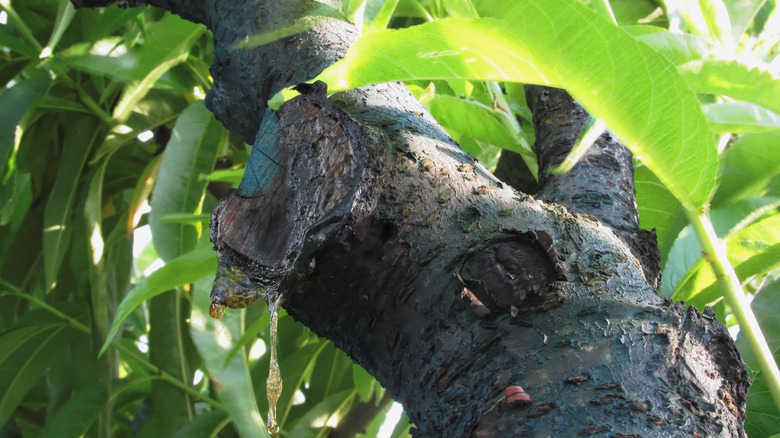
Other causes of bleeding include diseases and infestations. While different trees are vulnerable to different diseases, many types, including beech, maple, oak, and citrus trees, are susceptible to Phytophthora bleeding cankers that are caused by fungi in the Phytophthora genus. These infections prevent trees from effectively transporting water, so they may also cause dead branches in their upper canopy. Thankfully, Phytophthora infections can be treated using phosphite, an injectable antifungal.
Bacterial wetwood is another possible cause of bleeding trees. Also sometimes called slime flux, it is caused by a bacterial infection in the tree. The sap often has a slightly-alcoholic smell due to the fermented bacteria. Surprisingly, most trees are not seriously harmed by bacterial wetwood, so it does not generally require treatment.
Trees infested by insects like the peachtree borer may also bleed or ooze because the small larvae are chewing on the tree under its bark. Peach trees aren’t the only plants vulnerable to this pest, as other stone fruits can also be infected. Microscopic animals called Steinernema carpocapsae nematodes may be effective at killing peachtree borer larvae if they are injected into the tunnels bored by the larvae. Cleaning the area around the base of the trunk can also keep these insects away. If they’re a persistent problem, it may be well worth hiring a professional to come out to treat them, as these insects could kill your plant if left alone.

